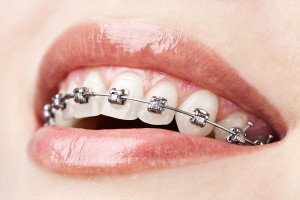How To Tell If You’re A Candidate For Getting Braces
 Most people feel that straight, white teeth are a good indicator of beauty and health. But if it feels like your bite isn’t aligned properly or that your teeth do not look that straight, then it may be time to consider getting braces and undergo some other type of orthodontic procedure and/or treatment. If you do need braces, then your dentist will probably refer you to an orthodontist in order to address these issues. However, there is some self-examination that can be performed at home in order to determine whether or not you do need them.
Most people feel that straight, white teeth are a good indicator of beauty and health. But if it feels like your bite isn’t aligned properly or that your teeth do not look that straight, then it may be time to consider getting braces and undergo some other type of orthodontic procedure and/or treatment. If you do need braces, then your dentist will probably refer you to an orthodontist in order to address these issues. However, there is some self-examination that can be performed at home in order to determine whether or not you do need them.
Examine Your Teeth In The Mirror
Start by looking at your teeth in a handheld mirror that enlarges the reflection you see. You are going to look for what we call malocclusions meaning teeth that are crooked or crowded. The indicators or warning signs include:
- teeth appear to be crooked and turned sideways
- teeth overlap others
- teeth protrude farther out than the adjacent ones
You can also determine whether or not crowding is an issue by checking to see if it is difficult to slide dental floss in between them. If so, crowding may be the problem. The problem with malocclusions or crowding is that even your dentist will have difficulties cleaning in between them properly. Plaque build-up can result which in turn may lead to cavities, enamel wearing abnormally, gum (periodontal) disease, and tooth decay.
Check to see if any of your teeth have unnatural looking gaps between them or that they are spread too far apart. Like crowded teeth, crooked teeth can also lead to more serious issues. The function of your bite and jaw could be impaired if you have:
- large gaps in between them
- missing teeth
- teeth that are proportionately smaller than others
Once you have done these examinations, check to see how your bite is aligned. Your teeth should fit together naturally when biting down and if they don’t, you could be a candidate for getting braces. Here are 3 ways to tell if there are bite issues:
- You have a crossbite – upper teeth appear to be positioned inside lower teeth
- You have an overbite – upper teeth extend over lower teeth
- You have an underbite – lower teeth extend over upper teeth
If you have a misaligned bite, there is an increased risk of having decaying food particles and plaque build-up in between and on your teeth. This can lead to dental abscesses, gingivitis, periodontal disease, and eventually tooth loss. Bite misalignment makes it difficult to chew thereby causing gastrointestinal discomfort and sore jaws. Jaw misalignment can cause strained muscles, eventually leading to chronic headaches. Additionally, if you have an overbite, the upper gum tissue can be damaged by your lower teeth.
Although these are some of the more common indicators of needing braces, you should always consult with your dentist as some problems are not as obvious as others. If you would like to determine if you are a candidate for braces, contact Community Dental Group today and schedule an appointment with us.